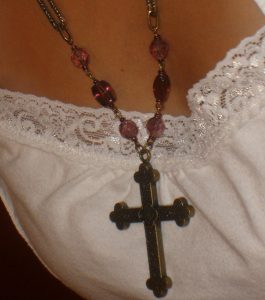In what could be a very exciting development, the Attorney-General (the EU’s foremost employment solicitor) of the European Court of Judgment has given an opinion in the religious discrimination case of the Belgian wing of G4 that has a policy of banning the Muslim headscarf (and other visible religious symbols) in the workplace.

This is the first case of religious discrimination which has reached the ECJ
This is important because although this is only an opinion, it is written by Europe’s top employment solicitor and the ECJ follows the opinions in about 75% of cases.
The opinion is that an employee may be expected to moderate the exercise of their religion in the workplace and the key issue is what is a fair balance between employer and employee, which is for the court or tribunal to decide in each case). The Advocate General hinted that a ban of this type was a fair balance in the workplace and not a breach of religious discrimination laws.
Important factors for an employer or tribunal faced with the question of what is a fair balance will be:
- The size and conspicuousness of the religious symbol (a ban on small jewellery is more likely to be acceptable than a ban on headgear)
- The nature of the employee’s activity (if customer-facing, the employer has more of a say)
- The context in which she has to perform that activity (if there is a wide cultural clientele, the staff can be expected to be more neutral)
- The cultural norms of the country (ours is fairly multicultural; in France, there is a culture of secularism).
- More restraint may be expected of an employee in a prominent role or a position of authority than of an employee working at a lower level.
This case follows hot on the heels of Mrs Eweida’s challenge to British Airways in this country, where the Court of Appeal found that its uniform policy (no visible crosses allowed, only mandatory items such as the turban) was not discrimination because it amounted to a fair balance. But then she took the case to the European Court of Human Rights, which decided that the Court of Appeal had failed to protect her right to religion because banning religious symbols at work was overkill). BA’s uniform policy at the time prohibited the wearing of any visible item of adornment.
The ECJ will want to see consistency across decisions if possible so why might this case go a different way to the BA case? The Attorney General suggests that this kind of dress code rule can only be regarded as fair if it is applied to all symbols/garments equally (unlike the BA dress code).
A key feature of the fair balance is whether the desired objective (a corporate ethos of religious neutrality) could be achieved by other, more lenient means. For example a company headscarf in company livery. This would be less intrusive for employees but would not achieve the objective of religious and ideological neutrality because it would still be a visible religious symbol.

Conclusion
Currently, employment solicitors advise against prohibiting religious symbols in the workplace as it is likely to lead to religious discrimination claims. However, if the ECJ case follows this opinion, as it probably will, then it will be a heavy-hitting case which could well change what we advise employers. Also, a few years will first need to pass to let some cases come through the UK courts and to give the appeal courts a chance to follow suit.
By Jason Harbourne
